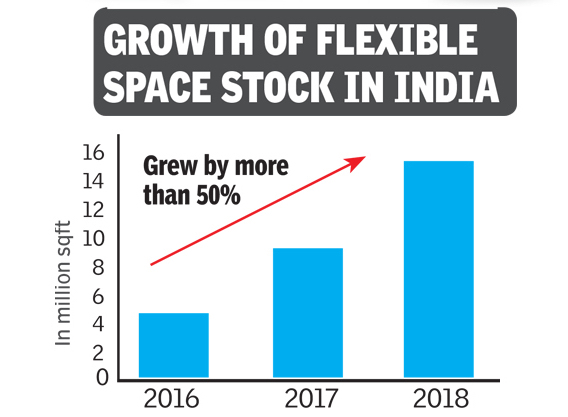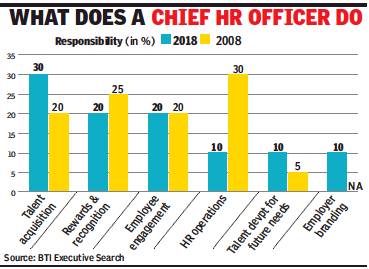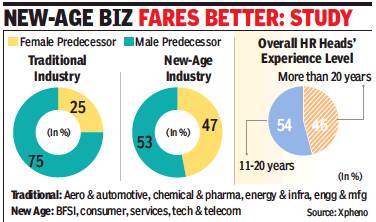Companies/ corporations: India
(→2008>18: Changing roles of chief human resources officers) |
(→Co-working spaces) |
||
| Line 11: | Line 11: | ||
=Co-working spaces= | =Co-working spaces= | ||
| + | ==2016-18: Flexible office space grows 50%== | ||
| + | [https://timesofindia.indiatimes.com/business/indian-flexible-space-stock-grows-50-in-last-three-years/articleshow/67358934.cms January 3, 2019: ''The Times of India''] | ||
| + | |||
| + | [[File: India is one of the biggest flexible space-markets in Asia-Pacific.jpg|India is one of the biggest flexible space-markets in Asia-Pacific <br/> From: [https://timesofindia.indiatimes.com/business/indian-flexible-space-stock-grows-50-in-last-three-years/articleshow/67358934.cms January 3, 2019: ''The Times of India'']|frame|500px]] | ||
| + | |||
| + | [[File: Growth of flexible space stock in India.jpg|Growth of flexible space stock in India <br/> From: [https://timesofindia.indiatimes.com/business/indian-flexible-space-stock-grows-50-in-last-three-years/articleshow/67358934.cms January 3, 2019: ''The Times of India'']|frame|500px]] | ||
| + | |||
| + | Companies continue to implement workplace strategies within their corporate office by providing various types of spaces. Several of them have also tilted towards using third-party flexible spaces recently. In fact, flexible spaces originated as a shared service for startups, but began to be utilised by larger/established corporates to improve the agility of their portfolios amid a volatile business environment. This has resulted in flexible office space operators growing rapidly in India helped by technology and economy, which together have changed tenant behaviour. Flexible spaces have grown rapidly in recent years, reaching a total footprint of under 40 million sqft across Asia Pacific (APAC) by H1 2018 in 16 major cities, which also included three in India. India is now one of the biggest flexible space markets in APAC. The overall stock of flexible space in the country (including all seven Indian cities) increased by about 50%, from almost 10 million sqft in 2017 to about 15 million sqft by Q3 2018. Bengaluru and Delhi-NCR were the largest markets for flexible spaces in India, with a combined share of almost 55%. | ||
| + | |||
| + | |||
==Cities with the most co-working spaces, 2018== | ==Cities with the most co-working spaces, 2018== | ||
[https://timesofindia.indiatimes.com/business/bengaluru-has-the-most-co-working-spaces/articleshow/65034459.cms July 18, 2018: ''The Times of India''] | [https://timesofindia.indiatimes.com/business/bengaluru-has-the-most-co-working-spaces/articleshow/65034459.cms July 18, 2018: ''The Times of India''] | ||
[[File: The top 5 Indian cities with the most co-working spaces, 2018-19.jpg|The top 5 Indian cities with the most co-working spaces, 2018-19 <br/> From: [https://timesofindia.indiatimes.com/business/bengaluru-has-the-most-co-working-spaces/articleshow/65034459.cms July 18, 2018: ''The Times of India''] |frame|500px]] | [[File: The top 5 Indian cities with the most co-working spaces, 2018-19.jpg|The top 5 Indian cities with the most co-working spaces, 2018-19 <br/> From: [https://timesofindia.indiatimes.com/business/bengaluru-has-the-most-co-working-spaces/articleshow/65034459.cms July 18, 2018: ''The Times of India''] |frame|500px]] | ||
| + | |||
| + | '''See graphic''': | ||
| + | |||
| + | ''The top 5 Indian cities with the most co-working spaces, 2018-19'' | ||
Co-working operators have leased over 8 million square feet of office space till April 2019 across eight major cities, driven by rising demand for flexible workspaces, particularly from startups. More than 120 co-working operators compete in these cities. | Co-working operators have leased over 8 million square feet of office space till April 2019 across eight major cities, driven by rising demand for flexible workspaces, particularly from startups. More than 120 co-working operators compete in these cities. | ||
Revision as of 14:20, 9 January 2019
This is a collection of articles archived for the excellence of their content. |
Contents |
Co-working spaces
2016-18: Flexible office space grows 50%
January 3, 2019: The Times of India

From: January 3, 2019: The Times of India

From: January 3, 2019: The Times of India
Companies continue to implement workplace strategies within their corporate office by providing various types of spaces. Several of them have also tilted towards using third-party flexible spaces recently. In fact, flexible spaces originated as a shared service for startups, but began to be utilised by larger/established corporates to improve the agility of their portfolios amid a volatile business environment. This has resulted in flexible office space operators growing rapidly in India helped by technology and economy, which together have changed tenant behaviour. Flexible spaces have grown rapidly in recent years, reaching a total footprint of under 40 million sqft across Asia Pacific (APAC) by H1 2018 in 16 major cities, which also included three in India. India is now one of the biggest flexible space markets in APAC. The overall stock of flexible space in the country (including all seven Indian cities) increased by about 50%, from almost 10 million sqft in 2017 to about 15 million sqft by Q3 2018. Bengaluru and Delhi-NCR were the largest markets for flexible spaces in India, with a combined share of almost 55%.
Cities with the most co-working spaces, 2018
July 18, 2018: The Times of India

From: July 18, 2018: The Times of India
See graphic:
The top 5 Indian cities with the most co-working spaces, 2018-19
Co-working operators have leased over 8 million square feet of office space till April 2019 across eight major cities, driven by rising demand for flexible workspaces, particularly from startups. More than 120 co-working operators compete in these cities.
Human resources (HR)
2008>18: Changing roles of chief human resources officers
Namrata Singh, How HR heads are leading change, October 19, 2018: The Times of India

From: Namrata Singh, How HR heads are leading change, October 19, 2018: The Times of India
There’s very little that a chief human resources officer (CHRO) today would have in common with one who had the same job a decade ago. Back then, the head of the department needed to know the nuances of labour law and be an ace at managing ops. Today, it’s more the ability to plan for the future of work and align employees to growth that’s essential. Today’s CHRO is also more likely to be younger and a woman, though the scale still tips in favour of men.
“The CHRO’s job has become much more like that of a chief transformation officer,” said Reena Tyagi, who has been leading HR at Cigna TTK Health Insurance for six years. “To succeed, the CHRO must master the attributes that were barely on his or her radar five years ago — embracing disruption, practising agility, solving for organisational structure, employing data analytics, and facilitating new work environments. The companies that get the right employees will greatly improve their chances of being able to take advantage of the big changes afoot in the marketplace.”
If a CHRO spent 20% time on talent acquisition in 2008, this now consumes 30% of his/her time. On the other hand, HR operations have reduced from 30% in 2008 to 10% this year, according to a study covering 100 companies by BTI Executive Search. Today, CHROs are more aligned to the business compared to 2008. This means that they are also judged on planning, engagement and mapping the skills capability for the current and future needs.
James Agrawal, MD, BTI Executive Search/PersolKelly, said, “The role of a CHRO is becoming more strategic in managing and developing talent. It is a clear expectation from CHROs that they must help the business by building and assigning talent, especially key people, and work towards unleashing the organisation’s potential.” He said CHROs are now expected to be both business-savvy and data-savvy. “In recent years, we’ve witnessed an increase in demand for analytical CHROs with good business acumen and experience in managing diverse talent and work environments. Companies are looking for CHROs who are innovative and have long-term vision,” he said.
‘Recession, tech advances have reshaped HR work’
According to the study, disruptions have touched all areas of the CHRO’s traditional portfolio. “From the 2008 recession to major technological advances, the events of the past decade have shaped how we work today,” said Shantanu Das, CHRO, Amway India. “A decade ago, a company’s top future challenges were succession planning and developing skills of leaders. Today’s challenge has moved to acquiring and retaining specialised talent. Conventional HR practices are eroding, giving way to agile thinking and dynamic orientation. The role of a CHRO is a hands-on one and a critical element for success is the pace with which an HR leader can transform the culture to enable higher engagement.”
The average number of years required to become a CHRO has come down from 15-20 years to 12-18 years. Contrary to the belief that HR roles attract more women, at the level of CHRO, men hold sway though the gender ratio has improved from 90:10 in 2008 to 70:30 this year.
“Women are under-represented, particularly in senior leadership teams, but companies are increasingly realising the missed opportunities and are promoting women in leadership roles. Many companies have launched internal programmes to improve recruiting, retention, and promotion of women,” said Tyagi.
Leena Nair, the first woman CHRO at Unilever, is an engineering graduate who chose HR. She combines her engineering and HR skills. In a recent interview to TOI, Nair said: “We have to bring the field of human capital and financial capital together. We use standard measures to ensure we get the best talent from the best places. We measure the mood and morale of people with data analytics. With predictive attrition, we are able to predict which employees we may lose. That has saved us 200 million euros, the cost of unavoidable attrition.”
2018: Women replace men as HR heads in 60% companies
Namrata Singh, December 25, 2018: The Times of India

From: Namrata Singh, December 25, 2018: The Times of India
The corner office for human resources in India Inc, occupied by the chief HR officer (CHRO), has witnessed an interesting shift with more women replacing men.
Xpheno, a specialist staffing firm, mapped 200 movements of women HR officers over the last few years and found that they had replaced a male incumbent as an HR head in over 60% cases. This indicates stronger action by companies to meet their diversity and inclusion (D&I) requirements, especially at leadership levels, albeit through the HR department.
Interestingly, only 15% among these women have risen vertically to become CHROs. The study reveals the remaining 85% of these movements were external hires. While this means that talent pipelines internally were largely inadequate, the trend demonstrates a priority associated with the gender of choice for the role of CHRO.
Kamal Karanth, co-founder of Xpheno, said, “The interesting aspect this study has thrown up is not about a diversity shift at CHRO corner rooms, but that most organisations still have to go through the external hiring route to get there. Women are a majority in HR departments of most firms. This means the department that has to nurture women to the top is unable to do it. Whereas other organisations find them suitable for a C-suite. That’s a paradox.”
The study was conducted across multiple sectors in organisations having an employee base of over 500. According to the study, MNCs appear to chalk out better career paths for internal candidates, thus creating a better pipeline of women successors as compared to Indian enterprises.
Globally, HR positions are dominated by women and, over the last few years, India has witnessed a similar trend. Shabnam Jussa Gaitonde, HR head of Alembic Pharmaceuticals, said, “Today, we are seeing a shift with several of the HR leader posts being occupied by women, particularly in the metros. One of the reasons for this is, of course, that the pipeline is now available, which was not the case a decade ago.” Gaitonde said the other reason is that the essence of HR lies in the ability to make clear decisions about intangibles — such as personality and potential — that are conventionally strong female characteristics.
On the other hand, Shachi Irde, adviser to Catalyst Inc, a global non-profit working to expand opportunities for women, believes women dominating HR has largely been a myth. “If you look at employee data, you will find that women drop off somewhere in the mid level. What this data is confirming is that HR is no different. Organisations have to look at building stronger talent pipelines and focus on curbing attrition at the intersection of personal and professional priorities,” said Irde.